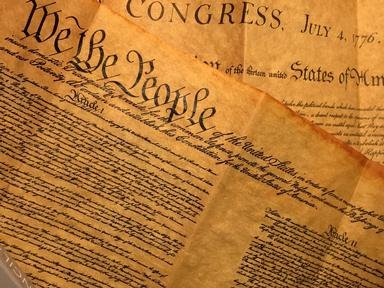Quiz Answer Key and Fun Facts
1. The Twelfth Amendment provides for the election of the vice president. Prior to its passage, how was the vice president elected?
2. Who was Thomas Jefferson's first vice president, the election of whom pointed out the need for the Twelfth Amendment?
3. The Twentieth Amendment changed the date when the presidential and congressional terms begin. What date did the Constitution originally call for them to start?
4. Under the Twentieth Amendment, if no one has received a majority of the electoral votes for president or vice president, then the new House of Representatives chooses the new president.
5. The Twenty-second Amendment limits the number of terms a president could serve. How many terms is a president limited to?
6. Under the Twenty-second Amendment, if a vice president succeeds to the presidency due to death or resignation, the partial term doesn't count towards the term limit.
7. The Twenty-second Amendment was ratified in 1951. Who was the first president legally affected by its term limit (as compared to choosing not to run or not receiving their party's nomination)?
8. The Twenty-fifth Amendment specifies what happens in the case of a vacancy in the office of vice president. It requires the president to nominate a new vice president who needs to be approved by a majority of both houses of Congress. Prior to the ratification of the Twenty-fifth Amendment, how was a vice presidential vacancy filled?
9. The Twenty-fifth Amendment allows the president to declare himself unable to perform his duties in which case the vice president serves as acting president until the president rescinds the declaration. Who was the first president to take advantage of this
10. If the president dies while there is no current vice president, the speaker of the house becomes president. Which Constitutional Amendment provides for this?
Source: Author
andymuenz
This quiz was reviewed by FunTrivia editor
trident before going online.
Any errors found in FunTrivia content are routinely corrected through our feedback system.
